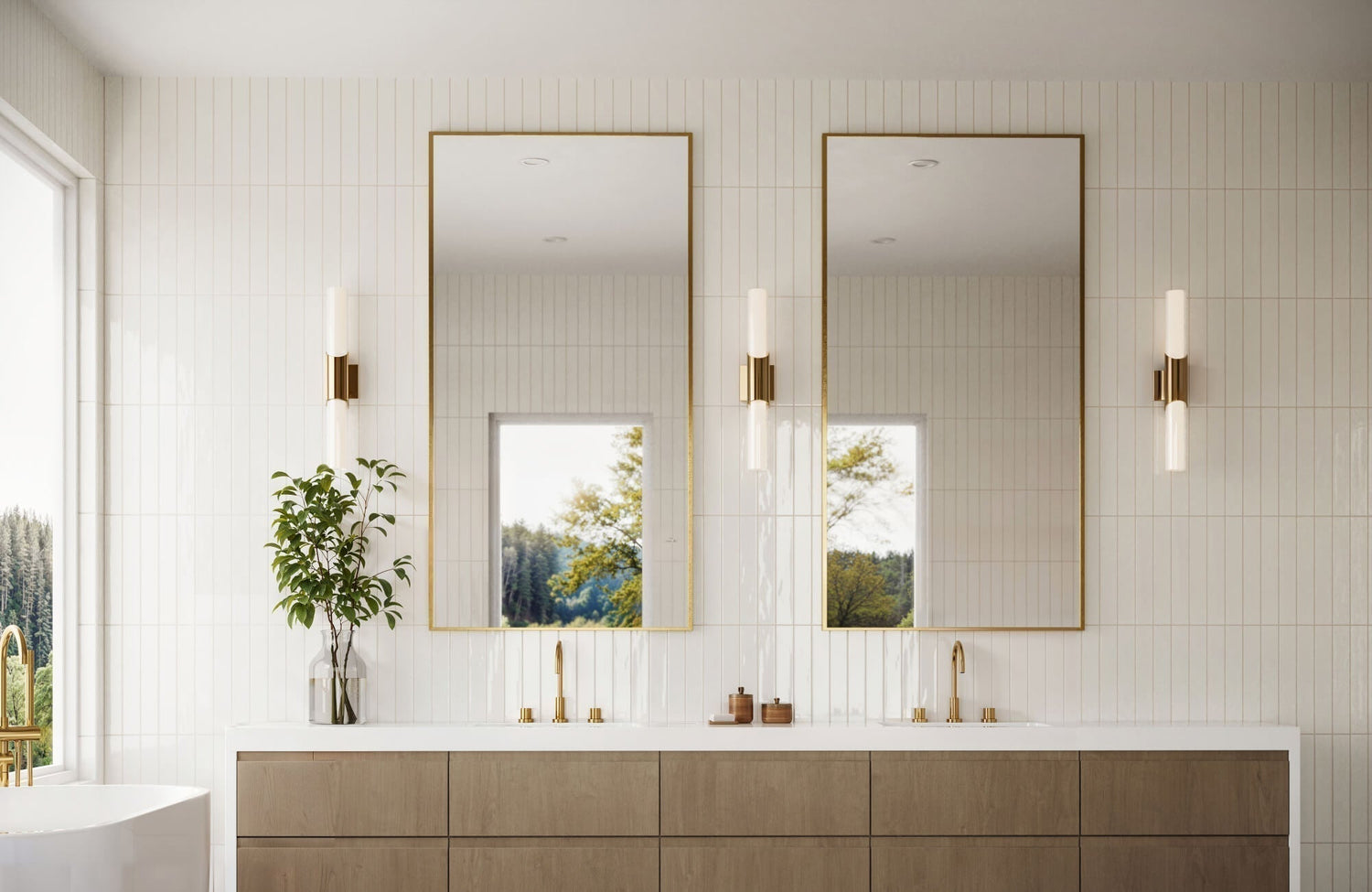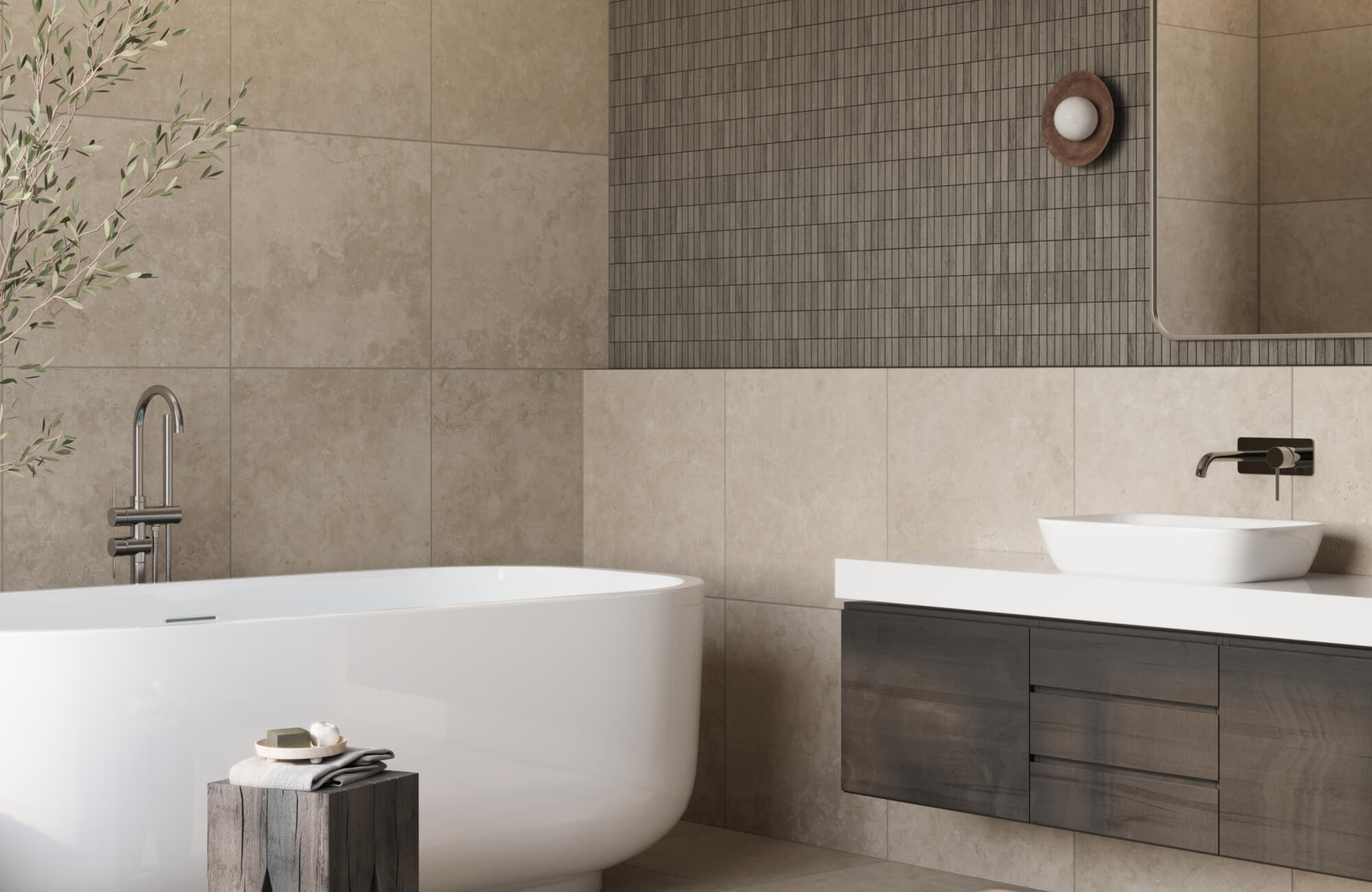White subway tiles have long been a go-to in home design and for good reason. They’re clean, classic, and incredibly adaptable, making them a staple in kitchens, bathrooms, and just about every space in between. Whether you’re aiming for a soft, traditional look or leaning toward something more modern, these tiles offer a blank canvas that lets your design choices shine.
In this article, we’ll help you make the most of white subway tiles by walking through layout patterns, tile sizing, and a few helpful styling tips along the way. From timeless brick to bold herringbone and everything in between, you’ll find plenty of ideas to create a space that feels intentional, balanced, and uniquely yours.
Layouts to Bring Out the Best in White Subway Tiles
White subway tiles are a timeless favorite, but how you lay them truly defines their impact. From soft and traditional to bold and graphic, different layouts can change the tone of a room entirely. Below, you’ll find several tile patterns—each with ideas on where they shine best, whether it’s your kitchen, bathroom, or even laundry room.
Classic Brick Pattern
If you're aiming for a layout that always looks good, the classic brick pattern is a great place to start. This familiar design staggers each row by half a tile, creating a balanced look that suits almost any setting. It gives your space an organized, grounded feel and works especially well in kitchens or bathroom walls where timelessness is key. The offset arrangement adds subtle movement without distracting from the overall design.
This pattern is also one of the easiest to install, which makes it a smart choice if you’re handling the project yourself. Its simple rhythm is forgiving and works with any grout color, giving you room to personalize. Whether you're tiling a backsplash or a full shower wall, the classic brick layout is clean, versatile, and easy to love.
Horizontal Stack
If you prefer a clean, modern vibe, the horizontal stack is worth considering. Instead of staggering the tiles, this layout lines them up in straight rows for a crisp, grid-like appearance. It’s great for small kitchens or laundry rooms where you want the space to feel orderly and bright. The symmetry also makes this pattern an easy match for minimalist cabinetry and open shelving.
This layout pairs well with soft grout for a seamless look or contrasting grout for extra definition. It's especially effective behind ranges or sinks where you want structure without too much visual weight. Overall, the horizontal stack feels modern, light, and refreshingly simple.
Vertical Stack
The vertical stack layout is a smart choice when you're working with low ceilings or narrow spaces. By stacking subway tiles in vertical columns, you draw the eye upward, making small bathrooms, powder rooms, or entryway nooks feel taller and more open. The clean lines offer a subtle way to shift proportions without changing the architecture.
This design works beautifully with wall-mounted vanities or tall mirrors, enhancing that vertical lift. It also gives a sleek, modern finish to compact rooms while keeping things light and airy. If you're looking for a layout that visually expands a space, this one delivers it.
Stepladder
If you're after something with a bit more movement, the stepladder layout adds visual rhythm in a clever, structured way. This pattern mimics the look of ascending steps and works well in transitional spaces like mudrooms or bathrooms with longer subway tiles. It brings a soft, dynamic feel without overpowering your design scheme.
It’s a fun option for backsplashes, especially when you want a touch of personality but still want the room to feel neat and put together. Stepladder layouts also work well as feature strips or shower wall accents to break up plain expanses of tile. The layout adds charm and a subtle modern twist.
Basketweave
If you're going for warmth and texture, basketweave is a beautiful choice. The woven pattern offers a tactile, layered look that adds instant coziness—perfect for bathroom feature walls, behind a vanity, or even a breakfast nook backsplash. It’s ideal when you want tile to feel like a decorative surface, not just a background.
This layout can soften hard lines in a space and pairs beautifully with soft neutrals, brass fixtures, or traditional cabinetry. Though it’s more detailed than other patterns, it doesn’t overwhelm. Instead, it adds quiet sophistication, especially in rooms where comfort and character matter.
Herringbone
When you're ready to go bold, the herringbone layout makes a striking impression. Angled tiles create a zigzag effect that feels full of movement, perfect for kitchen backsplashes, powder rooms, or statement shower walls. It brings a tailored, upscale look to spaces that benefit from a little extra punch.
While this layout may take a bit more planning, it rewards you with a designer-level finish. You can use longer subway tiles to enhance the visual impact and consider contrasting grout to define the pattern. Herringbone is ideal when you want to make the most of a small area and add lasting character.
Herringbone Block
If you love the herringbone effect but want something more structured, herringbone block gives you a modern, geometric variation. This pattern groups tiles into repeated herringbone blocks and looks sharp in larger areas like kitchen feature walls or walk-in showers. It brings energy without overwhelming the eye.
This layout also allows you to play with proportion and spacing, which makes it more adaptable in open-concept homes. It balances movement with control and suits both contemporary and transitional design styles. Think of it as a refined way to make a statement without straying too far from classic design roots.
Choosing the Right Subway Tile Size for Your Pattern
While layout patterns define the structure of your design, tile size plays a major role in how the space looks and feels. Choosing between 2x6, 3x6, 3x12, or 4x16 tiles isn’t just about aesthetics; it affects everything from visual flow to how much movement or contrast a surface creates. Some sizes suit cozy, detailed layouts, while others bring a clean, modern vibe.
Classic Sizes for Timeless Patterns
Shorter subway tiles like 2x6 and 3x6 are go-to choices for traditional brick patterns and detailed layouts like basketweave. These sizes introduce more grout lines, which can bring depth and texture without overwhelming the space. They’re ideal for vintage-inspired kitchens, bathroom walls, or backsplashes where you want that familiar, lived-in feel with a touch of charm.
Smaller tiles are also easier to handle and tend to feel well-proportioned in compact areas. If you’re working with narrow walls, alcoves, or want to keep things classic and inviting, these sizes offer just the right balance of detail and simplicity.
Longer Tiles for Modern Layouts
If your style leans more modern, longer formats like 3x12 or 4x16 tiles help create a clean and tailored look. These stretched dimensions enhance linear layouts such as herringbone, vertical stack, or stepladder, giving the room a sense of height, width, or flow depending on placement. They're great for larger spaces too, where long runs of tile can shine.
Longer tiles reduce the number of grout lines, which makes walls feel more seamless and open. If you’re after a refined, minimalist design, especially in open-plan kitchens or contemporary bathrooms, these sizes will give you that polished, updated feel.
When to Mix Sizes for Extra Style
Mixing tile sizes can add dimension and keep things visually interesting without straying from a cohesive look. For example, you might pair 2x6 tiles on a backsplash with 3x12 tiles on a nearby shower wall, creating contrast through proportion rather than color. It’s a subtle design move that adds a custom touch.
To keep it harmonious, pay attention to grout color and finish; choosing matching tones will help tie everything together. Clear layout transitions or framed zones also help make the change in size feel intentional. When done right, mixing subway tile sizes can feel thoughtful and personal, which would instantly elevate your design without adding complexity.
Finding the Best Subway Tile Pattern for You
At the end of the day, the best subway tile pattern is the one that makes you smile every time you walk into the room. Whether you’re drawn to the simplicity of the classic brick pattern or the texture-rich feel of basketweave, there’s no wrong choice. And if you’re up for it, mixing things up and trying new layouts can lead to some surprisingly beautiful results.
Feeling inspired to go a little bolder? Try working with two or even three tile colors in one layout. Using alternating shades in a horizontal or vertical stack, for example, can instantly turn a plain wall into something that pops and feels completely unique. It’s a small change that adds a lot of personality to your space.
The beauty of white subway tiles is that they’re a blank canvas just waiting for your creativity. So don’t hesitate to experiment with colors, patterns, and layouts. Use our augmented reality (AR) tool to preview how it will look in your space, or connect with our design team for personalized help. Your home should feel like you, and the right tile design can help it do just that.









